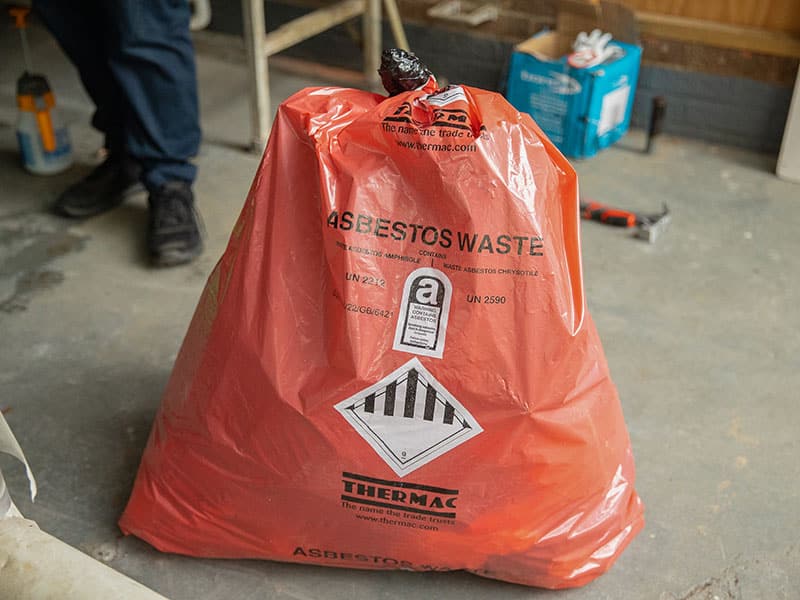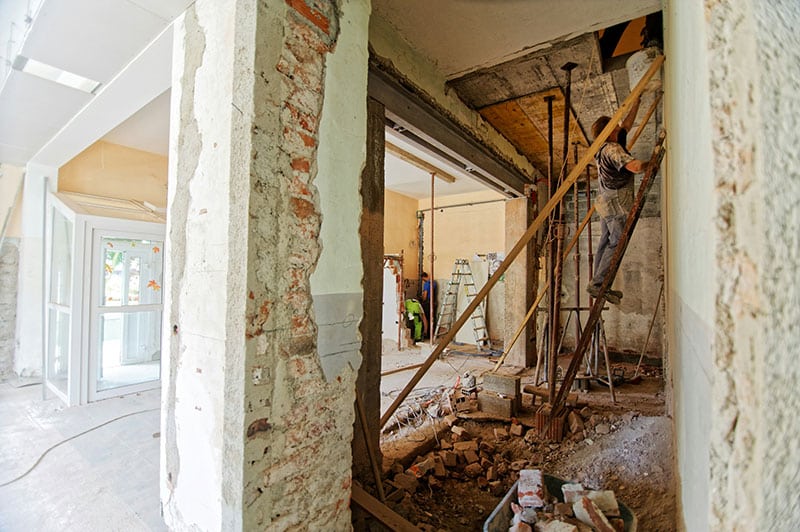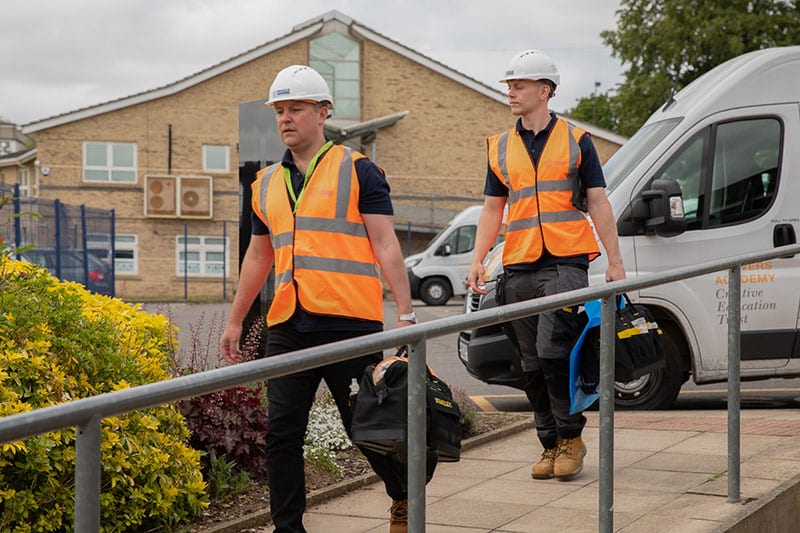6 Asbestos Statistics and Myths Exposed – What the Stats Reveal
The fact that the material, asbestos was banned in the UK more than a quarter-century ago now – in 1999 – may lead many of us to presume asbestos is largely a “historical” issue, rather than one that continues to widely impact on people’s lives today.
In truth, asbestos remains a widespread and persistent issue in the UK. This is not only because it has been estimated to still be present across as many as 1.5 million buildings up and down the country.
Today, we’d like to draw attention to the role that certain common asbestos myths have long played in creating misconceptions – which, in turn, endanger lives and businesses.
We will debunk six of these common myths, using facts and statistics to provide all-important clarity.

Myth 1: asbestos is a thing of the past
The reality is that asbestos continues to be the UK’s biggest industrial killer, with its effects persisting decades after the 1999 ban.
Key facts and statistics:
- One person dies every 90 minutes from asbestos-related disease in the UK.
- Annual deaths from asbestos-related disease still exceed 5,000, three times higher than road traffic fatalities.
- Death rates from asbestos-related conditions have not fallen in 30 years, despite the Health and Safety Executive (HSE)’s predictions, due to long disease latency periods.
- Buildings constructed before the year 2000 can never be deemed entirely asbestos-free unless they are fully demolished, due to the extensive use of over 3,000 asbestos-containing products, some hidden in inaccessible areas of properties.
- Approximately 25 million to 27 million buildings in the UK were constructed before the year 2000, and are therefore presumed to contain asbestos.
The statistics tell their own story about the asbestos situation today: the pervasive presence of this carcinogenic substance in older buildings makes it a current and ongoing risk.
Myth 2: managing asbestos risk is too expensive
The reality is that the cost of non-compliance far outweighs the investment required for proper asbestos management.
Key facts and statistics:
- Unlimited fines can be imposed in the UK Crown Court for serious breaches of asbestos regulations.
- There have been various cases of hefty financial penalties being handed down to those found guilty of wrongdoing. These include the £565,000 fine that Poundland received for failures at a store in Ipswich, as well as a £1 million fine – plus £600,000 in costs – imposed on Marks & Spencer for exposing contractors to asbestos.
- Failure to comply with the UK’s stringent legislation on asbestos can also result in prison sentences of up to two years for those responsible.
- Asbestos fines are based on the severity of the given legal breach(es) and the offending organisation’s turnover – so, bigger companies often pay penalties running into multiple millions of pounds.
The above case studies should serve as salutary lessons of the importance of attention to detail when it comes to asbestos management.
For example, in the case of Poundland, it was the absence of one document – the asbestos management plan – that led to a substantial penalty, and public scrutiny for a national retailer, despite the issue being confined to a single site.
In the grand scheme of things, such asbestos management arrangements as proper asbestos surveys, management plans, and training are cost-effective compared to the fines, legal costs, and reputational damage that could befall you and your organisation if you fail to adhere to the regulations.
Myth 3: asbestos surveys are a one-time requirement
The reality is that asbestos information in relation to a given premises must be regularly updated, not just once, to ensure it remains accurate and compliant.
Key facts and statistics:
- Any building containing asbestos requires periodic inspections, every six to 12 months, to monitor asbestos-containing materials (ACMs).
- It is essential that asbestos surveys, registers, and risk assessments are updated as frequently as necessary – not just every year.
- Updates need to be made to the asbestos information about a given property or site after any maintenance, removal work, or changes to the condition of ACMs.
- Failure to update asbestos data heightens the risk of legal non-compliance and exposure to potentially lethal asbestos fibres.
Relying on outdated information is one of the most dangerous things that anyone can do in asbestos management. This is because incomplete or inaccurate data pose huge risks to the health and safety of building occupants, users, and the wider public alike.
Accurate and current data, then, are very much the backbone of safe asbestos management. However, this accuracy can only be achieved if diligent work is done to consistently monitor and update the asbestos records that are maintained for a given site.
Myth 4: asbestos only poses a risk during major renovations
The reality is that even minor tasks, such as drilling or cable installation, can potentially disturb ACMs. This, in turn, could cause the release of dangerous asbestos particles, which might then be breathed in by someone nearby.
Key facts and statistics:
- Although management surveys identify accessible ACMs, the non-intrusive nature of such inspections means they cannot account for asbestos hidden within walls, ceilings, or floors.
- Improper work without having an appropriate (fully intrusive) refurbishment survey carried out puts workers and occupants at significant risk of asbestos exposure.
It is a legal requirement in the UK to arrange for a refurbishment survey or demolition survey to be conducted prior to any intrusive work on a building. This helps to ensure hidden asbestos is identified and managed before work begins at the site.
Myth 5: training isn’t necessary for everyone working in older buildings
The reality is that asbestos training is mandatory for anyone who is likely to encounter ACMs, even if their contact with the substance would only be indirect.
Key facts and statistics:
- Tradespeople account for a significant proportion of asbestos-related deaths. This has been widely attributed to a historical lack of asbestos training and awareness among such workers.
- The Control of Asbestos Regulations 2012 (CAR 2012) stipulates that asbestos awareness training must be provided to relevant workers.
Sadly, it is all too common to this day for people who are responsible for managing ACMs in buildings to presume that as long as they have an asbestos register based on a management survey, anyone can come to their site and carry out work. This is untrue.
If contractors aren’t given the asbestos training they require, they may not understand how to interpret the asbestos register. Furthermore, they may be unsure whether the asbestos survey provided is adequate for their work.
The evidence is clear: comprehensive asbestos training saves lives by empowering workers to identify risks, follow protocols, and prevent exposure to this dangerous mineral.
Myth 6: asbestos will eventually become irrelevant
The reality is that asbestos will remain a pressing issue for decades – perhaps even centuries – due to its extensive historical use and the slow demolition rate of older properties.
- At the current demolition rate of around 50,000 buildings annually, it would take more than 500 years to clear all pre-2000 structures in the UK.
- Many protected or heritage buildings containing asbestos will remain indefinitely. This necessitates long-term ongoing management of the ACMs present at such locations.
The strict asbestos regulations that exist in the UK today were devised in recognition of the need for long-term vigilance and management of the risks the now-banned substance continues to pose in the built environment.
Fortunately, by placing your trust in licensed and accredited asbestos professionals such as those in the Oracle Solutions team, you can help make asbestos management easier, no matter how many years you are responsible for a given building or site.
Conclusion: exposing myths allows for lives to be saved
In this article, we have sought to highlight certain asbestos myths that have persisted through the years. Unfortunately, these long-held misconceptions have probably put many lives at risk due to subsequent poor asbestos management at buildings throughout the UK.
By clarifying what the latest asbestos statistics say, we hope we have been able to banish some of those common misconceptions. We hope this information will help your own efforts to manage asbestos safely and effectively at a building or site for which you are responsible.
Ultimately, proactive and well-informed asbestos management will always be of huge importance when it comes to ensuring safety, compliance, and financial responsibility.
Our accredited experts at Oracle Solutions would encourage you to share these facts to help combat misconceptions about asbestos, and to help protect lives in the process. Professional asbestos surveys, management, and training all greatly help lower asbestos risks.
To request a fast and free quote for any of our highly regarded asbestos services, please don’t hesitate to contact our team today.

Written by Jess Scott
Jess Scott has been an all-round asbestos consultant since 1996. That’s nearly 3 decades of asbestos knowledge. He spends his time sharing that knowledge with the team at Oracle and with their clients. Jess's goal is, and always has been, to use my expertise in helping people to comply with the law. This legal compliance ultimately helps to protect everyone from the harmful effects of asbestos. Jess has acted as an asbestos expert witness in legal cases and is involved in many asbestos educational activities throughout the UK.





